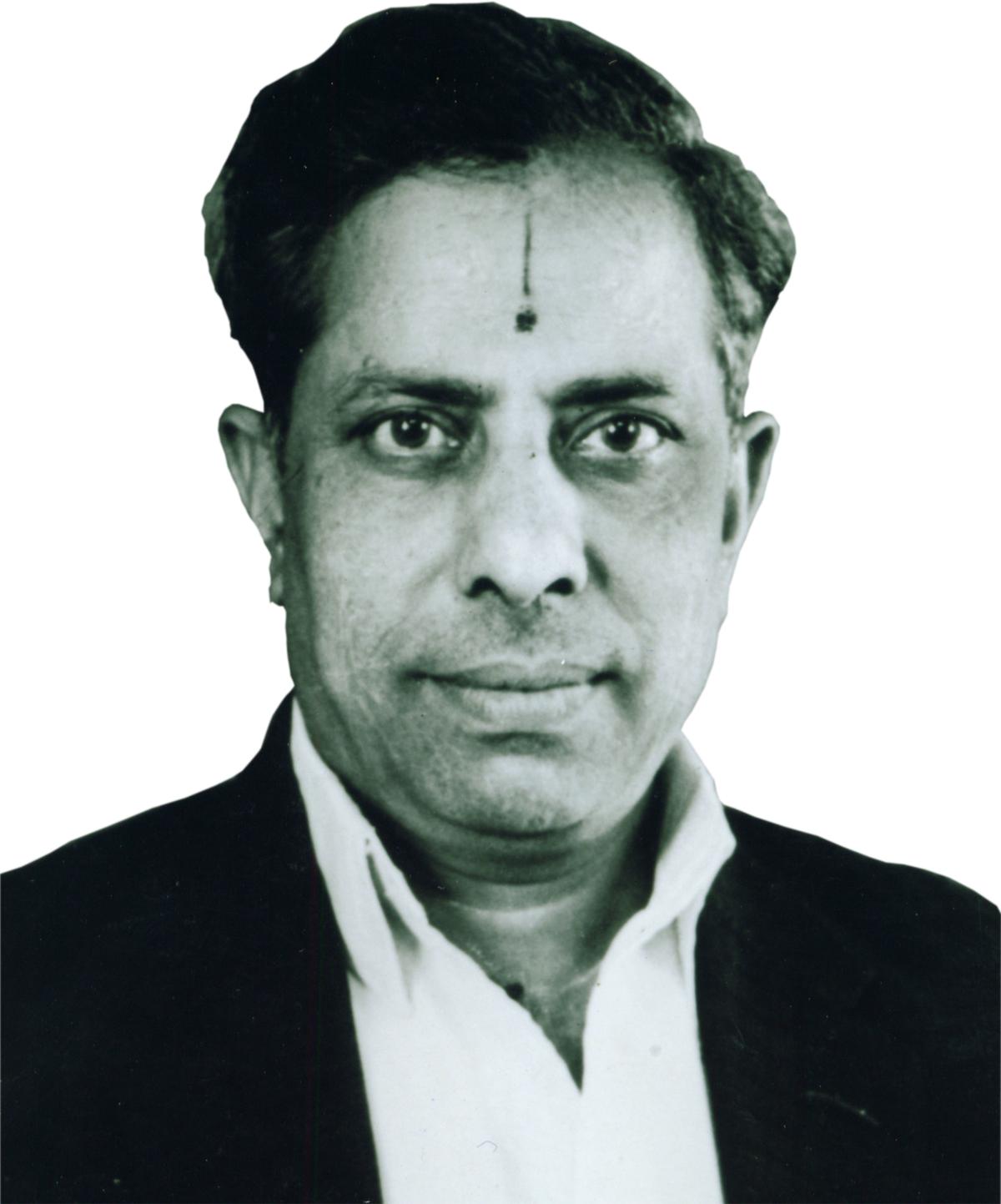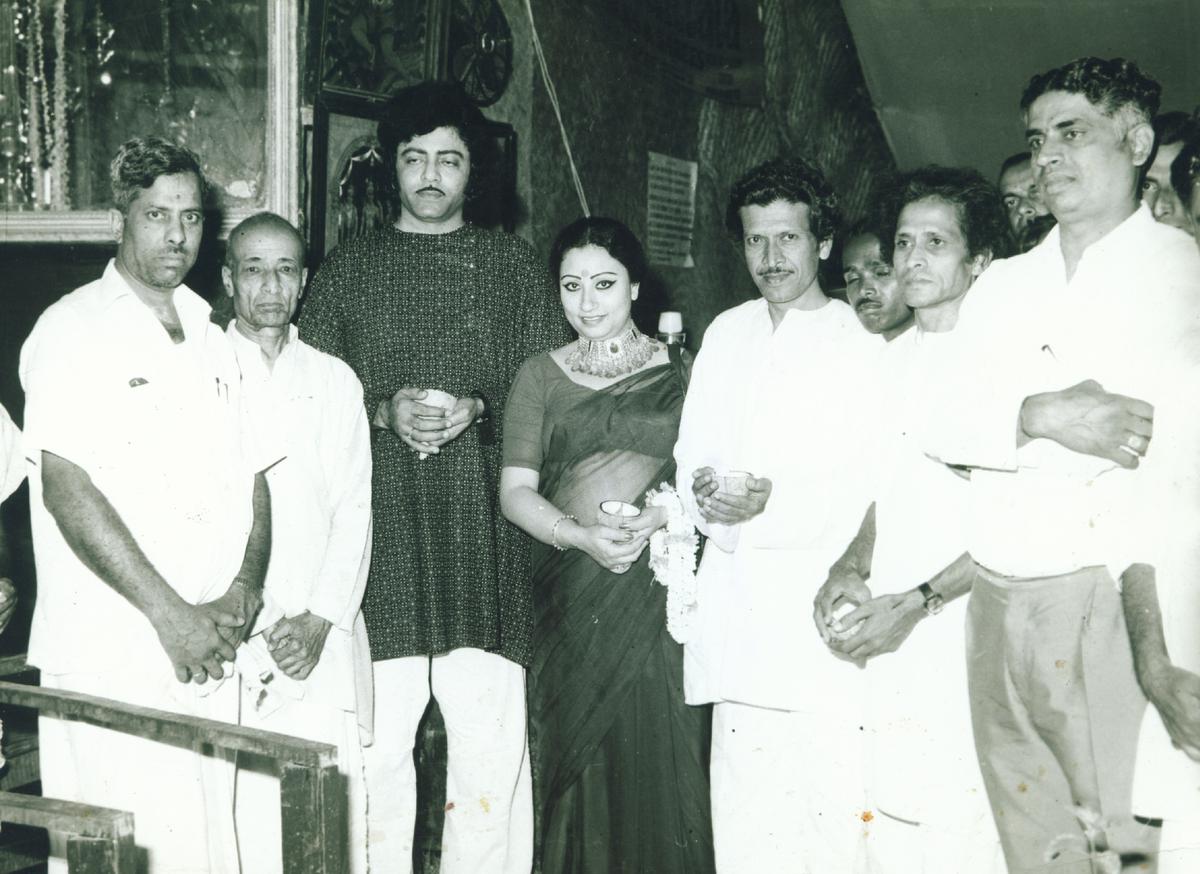Way back in 1962, Flute Mahalingam (Mali) had to grace the stage during aS Sree Rama Seva Mandali’s Ramanavami concert, but some miscommunication led to the flautist not travelling to Bengaluru on that date. Organiser SV Narayanaswamy Rao’s (SVN) commitment to the artiste and the assembled gathering saw him zoom to Chennai by car to personally pick up Flute Mali.
“The 7pm concert started only at 10pm, and the audience adamantly stayed put until they heard maestro Mali’s magic on the bamboo reed pour forth. Those were the times when music connoisseurs and organisers saw an intimate engagement towards classical melodies. My father celebrated the spirit of music, unconditionally,” says SV Narayanaswamy’s son, SN Varadaraj swho is now helming the Ramanavami musical jamboree at Chamarajpet Fort High School grounds, after his father’s demise in 2000.
Varadaraj says, “Those days when journeys were time-consuming and arranging train travel and accommodation for visiting musicians was laborious, Narayanaswamy personally took it up as his responsibility. Treasuring all spheres of classical melody and acknowledging every performer, his secular make-up was apparent when artistes as Bade Ghulam Ali Khan, KJ Yesudas, Chembai Vaidyanatha Bhagavathar, Sarod maestro Ali Akbar Khan, Shehnai virtuoso Bismillah Khan, Parveen Sultana or Nadaswara vidwans such as Sheik Chinna Moulana and Karaikuruchi Arunachalam not only performed for Ramanavami, but also relished the divine prasaada served at the fest.”
If there is one man whose contributions to the changing cultural landscape of Karnataka made a statement with music, it was Narayanaswamy Rao, whose efforts saw the Mandali grow substantially. The Mandali’s 75th year was marked with a stamp release, commemorating its cultural status in the city.
SVN Rao with Mysore Royal Jayachamaraja Wadiyar
| Photo Credit:
Special Arrangement
Eminent dignitaries of the times such as Mirza Ismail, Sir M Visvesvarayya, PV Rajamannar, VV Giri and R Venkataraman have inaugurated the Ramanavami Festivals at various editions of the Sree Ramaseva Mandali. Most noteworthy occasions were in 1955 and 1957 when Mysore Royal Jayachamaraja Wadiyar, a musicologist and composer, inaugurated the celebrations along with C Rajagopalachari. “When Dr. S Radhakrishnan, the then President of India, couldn’t make it to the inaugurals in 1959, his taped speech was flown down from Delhi in time for the festival,” recollects Varadaraj.
A seed is sown
In 1937, 13-year-old Narayanaswamy witnessed a young patriot fall to the ground injured while participating in a freedom movement protest at Bengaluru’s City Market. This was during the British rule and police forces had opened fire to quell the uprising. The sight of the bleeding man calling on the Almighty whilst writhing in pain was haunted Narayanaswamy for a long while; eventually, he resolved to work towards cultural unity through bhakthi, and ingrain harmony in people through melody.
Fondly recollecting SVN’s dauntless determination, Varadaraj says his father had often said this incident at City Market was a turning point in his life. Festival congregations, he thought, would provide people with the right platform for prayer along with cultural proceedings for a commonality of purpose. The rationale was not just for religious outpourings, but to have a sense of reason and principle towards the propagation of our culture and music for a united India.

SVN Rao with actor Rajkumar
| Photo Credit:
Special Arrangement
“My father conducted nearly ten Ramanavami Festivals during the British Raj, as he started the Ramothsava in 1939!”
Narayanaswamy — born on December 21, 1924 to Vasudev Rao of Shivarapatna and Janaki Bhai — was used to taking the lead while organising Holi and Ganesha festival celebrations. At the close of one of these festivals, the surplus money accrued from collected funds pushed him into thinking how this amount could be put to better use. Eventually, a three-day festival to celebrate Lord Rama through bhakthi and melody from ‘Balakara Sreerama Bhajana Seva’ took shape in 1939.
That was how the Mandali was flagged off from humble beginnings near the Rameshwara Temple, on the 3rd Main Road of Chamarajpet.
However, that didn’t satiate Narayanaswamy. As a student of the violin, his interest in classical genres saw him invite Carnatic and Hindustani musicians for ensuing Ramanavami festivals. The modest Mandali grew with every passing year — from platforms with bhajans and three-day concerts, to ultimately becoming a grand affair complete with spiritual discourses, youth contests, slots for budding musicians and the participation of stalwarts from every generation and genre.

SVN Rao
| Photo Credit:
Special Arrangement
A forerunner
Narayanaswamy Rao and ghata exponent KS Manjunath’s passion to propagate meaningful music from the late 1930s proved to be an encouraging factor for several Ramaseva samitis and mandalis to take shape in the city. After Narayanaswamy Rao flagged it off in Chamarajpet, Bengaluru gradually saw almost every area in the city echoing with music during Ramanavami, making it a part of the city’s music season.
That a mere event of celebrating the ‘Hero of the Ramayana’ in every nook and corner with kosambri and panaka slowly expanded to accommodate religious discourses and classical arts, is a rare Bengaluru phenomenon.
In the early-1940s, Narayanaswamy was introduced to legendary violinist T Chowdiah and Flute Mahalingam, both of whom developed an instant affection for the Mandali and its purpose. Their strategy to help the Ramaseva Mandali banner fly high was simple — get artistes to perform by offering them a bonus: Chowdiah would accompany them on the violin.
There were special sessions when Flute Mali and Chowdiah performed together for an enraptured audience. It is said Chembai or his student Yesudas never accepted a pie, while vocalist Balamurali Krishna in the early 1960s was offered ₹12 for his performance! While Chowdiah and later, MS Subbulakshmi instantly donated whatever received during Ramanavami, Mandolin Shrinivas was known to only accept the blessings of the Divine.

SVN Rao with Begum Parveen Sultana
| Photo Credit:
Special Arrangement
Music that mattered
“Devotion through music was the only underlying current,” says Varadaraj. “Amjad Ali Khan too, who never accepted any fee, has been known to ask for his portion of holy water and prasaada before a concert.”
Narayanaswamy’s five children have seen their father work for a public cause in society, which in turn translated to unseen benefits. They say Saleh Ahmed, the furniture dealers, supplied them with 10,000 chairs for a trifle. “During Ramanavami, the pandal was home to my father for two months. With the goodwill earned by him, we are now able to lock in programmes with top-rung musicians over the phone today.”
No wonder Bade Ghulam Ali Khan in 1956 is said to have waited for a week for the continuous downpour to stop and sing for Ramaseva Mandali audiences thereafter.
“SVN was a people’s man and he had established a special rapport with musicians. He also believed in nurturing young talent. He took great effort in making both performers and rasikas realise the unfathomable value associated in pioneering a cultural identity for pre-independent India,” says Varadaraj.
(The panel discussion on December 21 will take place between 5pm and 9.30pm at 21/1, SVN Rao Marg, 4th Main, 2nd Cross, Chamarajapet. It will also be live streamed on www.facebook.com/ SreeRamasevaMandali )
Centenary celebrations
The panel discussion on December 21, to flag-off the centenary celebrations will feature artistes who closely knew SV Narayanaswamy Rao. “The cultural landscape of Karnataka and how SVN contributed to see changes evolve, will be discussed by Mandali chairman CS Kedar, IAS; senior music critic M Surya Prasad; senior journalist R Poornima; musicologist Anand S; and some of the earliest performers at the Mandali — violinist Mysore Manjunath and vocalist Vidyabhushana,” says Abhijith Varadaraj, SVN’s grandson who is actively involved in organising the festival.
“We will have special programmes every month for two years to celebrate SVN until December 2025. The centenary year Ramanavami in April 2024 will honour 100 artistes,” he adds.